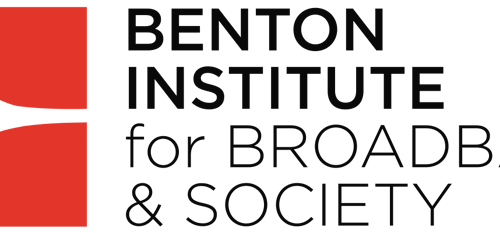In my last post I briefly reviewed the less-than-stellar history of municipal Wi-Fi networks that were deployed roughly a decade ago. As I noted in that post, these projects employed earlier generations of technology and often-poorly-conceived “public-private partnerships.” And, importantly, they were launched well before the combination of smartphones/tablets and data-capped LTE/4G mobile services had turbocharged demand for nomadic Wi-Fi connectivity.
In this post I’m going to focus on an example of what I consider a new generation of municipal Wi-Fi networks, Boston’s Wicked Free Wi-Fi service, which the city formally launched in April.
As reported by Michael Farrell in the Boston Globe:
Boston has switched on a free public Wi-Fi network for about 30,000 residents living in the Grove Hall neighborhood as the first step to blanketing much of the city with wireless Internet service. Dubbed Wicked Free Wi-Fi, the network of outdoor Wi-Fi hotspots will provide Internet coverage over an area of about 1.5 square miles.
In contrast to the first generation of municipal Wi-Fi projects, Boston’s network is focused on the fast-growing demand for nomadic high-speed connectivity rather than the more mature and more technically and financially challenging market for in-home access:
The city stresses that the new Wi-Fi network isn’t designed to be used inside homes as a replacement for wired services that residents can buy from commercial providers. Rather it will work best for mobile users, and is largely intended to be accessed outdoors or in the restaurants and cafes around the neighborhood… making it easier for users with smartphones and tablets to access the Internet on the go.
While “first generation” projects tended to underestimate the technical and economic challenges they faced in targeting the in-home market, the Boston project sets a more realistic yet socially valuable goal of expanding mainly-outdoor coverage. As Farrell explains:
Boston had Wi-Fi hotspots scattered around the city before this rollout — about 70 access points in a few tourist districts or at municipal properties. However, those hotspots reach just a short distance, and do not have the kind of wide-area blanket coverage as the Grove Hall network should provide.
And while first generation projects often looked to a private company like Earthlink to bear the financial risk and deployment costs in exchange for a large measure of control and future profit potential, Boston is taking a different approach. For backhaul—a key component of network cost and performance—it is using its existing fiber network. And, with help from HUD community development grants, it appears to be funding the project itself rather than looking to a private service provider to bear the financial risk. As the Globe article explains:
The Grove Hall project was born during [former mayor Thomas] Menino’s administration, which was awarded a $20.5 million federal grant from the Department of Housing and Urban Development in 2011 that set aside money for redevelopment projects in Dorchester. About $300,000 was used for the Grove Hall build-out… Grove Hall was selected as the launch site because of its large number of low-income families who may not be able to afford the high cost of speedy broadband service.
According to an April 10, 2015 press release issued by current mayor Marty Walsh’s office, the Wi-Fi project is “using resources from the City and its partners, as well as [HUD’s] Choice Neighborhoods program.”
“HUD is very excited about Boston’s innovative use of Choice Neighborhood funding for the Grove Hall Wi-Fi project,” said Barbara Fields, HUD New England Regional Administrator. “This project is opening the door to opportunity for Boston residents, in particular students, and we are proud to be a part of this ‘out of the box’ thinking that is improving lives.”
In terms of the network’s future expansion, Farrell reports that:
[O]ver the next two years, the Walsh administration plans to extend the Wi-Fi network to all 20 commercial districts that are part of the city’s Main Streets neighborhoods program. Those areas are eligible for federal grant money to fund community development projects.
According to the city’s press release, when it was issued the Wicked Free network was attracting 14,559 visitors per month, including 79% repeat visitors. More information on the project, including an interactive network map, is available here, along with an invitation to “[d]ownload the Citizens Connect app to alert the City of neighborhood issues such as potholes, damaged signs, and graffiti.”
More than just a physical network
The Wicked Free web site’s invitation to download the Citizens Connect app is a reminder that, when considering current-generation municipal network projects, it’s important to keep in mind that they are increasingly viewed as part of a broader strategy aimed at creating what authors Stephen Goldsmith and Susan Crawford refer to as “The Responsive City.”
Boston is a good example of this. For example, in 2010 the city launched the Mayor’s Office of New Urban Mechanics (for information on MONUM projects see here and here).
According to its web site MONUM:
[P]ilot[s] experiments that offer the potential to significantly improve the quality of City services…[and] focuses on four major issue areas: Education, Engagement, the Streetscape and Economic Development. To design, conduct and evaluate pilot projects in these areas, MONUM builds partnerships between constituents, academics, entrepreneurs, non-profits and City staff.
Below are some links with additional information about Boston’s effort to use technology (including the Wicked Free Wi-Fi network) to become a Responsive City:
- An NPR interview with two members of Mayor Walsh’s staff
- A summary of key components of Walsh’s “innovation platform”
- A collection of articles about some of Boston’s tech-related initiatives, published on the Boston Globe’s BetaBoston web site
- A blog post by Walsh entitled “5 Tech Innovations Boston is Using Right Now”



